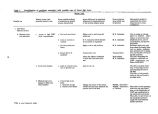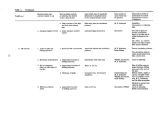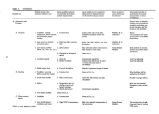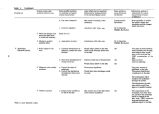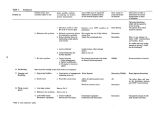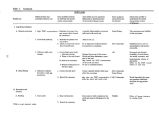| OCR Text |
Show CHAPTER I INTRODUCTION Description of Great Salt Lake Great Salt Lake ( Figure 1) is the largest salt water lake in the United States. The lake lies at the bottom of a closed basin and is fed principally by flow from the Bear, Weber, and Jordan Rivers. Because it is a terminal lake, the only outflow from the lake is by evaporation. At a surface elevation of 4,200 feet the lake has a surface area of approximately 1,600 square miles and an average depth of 13 to 16 feet. The natural features of the lake have been significantly affected by the construction of dikes and causeways. The construction of evaporation ponds to facilitate the recovery of minerals from the lake brine has altered the natural surface area of the lake. Causeways have altered the natural lake circulation patterns and induced local changes in salinity levels. For example, the construction of a causeway from the mainland to a state park on the north end of Antelope Island has impounded the inflow from the Jordan River. This situation will cause a dilution of the brine in Farmington Bay which may create a fresh water environment in the bay ( Utah Division of Water Resources, 1974). A semi- permeable, rock- fill railroad causeway was completed across the lake in 1959 by the Southern Pacific Railroad Company. As a result the lake was divided into two arms with the south arm containing approximately twice the volume of the north arm. The causeway has altered the concentration of brine and the circulation patterns and has changed the hydrology of the lake. Since the completion of the railroad causeway, the north arm has contained a well mixed concentrated brine. South of the causeway the lake is vertically stratified with a relatively dilute brine overlying a more concentrated brine. The lower brine represents about 10 percent of the total volume of the south arm. Data on the elevation of the surface of Great Salt Lake have been gathered since 1851 and are given in Figure 2. The level has varied from a high of 4,211.6 feet in 1873 to a low of 4,191.4 feet in 1963. The lake reached a 48 year high in the spring of 1976. Under present lake conditions the south arm receives approximately 95 percent of the surface inflow to the lake. This inflow pattern has created a head difference across the causeway, with the south arm elevation being greater than the north arm, which causes the major inflow to the north arm to be brine from the south arm. Study Background An increased concern for the proper management of the resources of Great Salt Lake resulted in the creation of the Great Salt Lake Division in the Department of Natural Resources by the Utah Legislature in 1975. The division was given the responsibility to prepare and maintain a general, comprehensive plan for the use and development of Great Salt Lake. The division recognized that in the comprehensive planning process there is a parallel need for research to provide effective and timely information essential in the formulation and comparison of alternative plans. This need to discern the research component of comprehensive planning resulted in a cooperative agreement between the division and the Utah Water Research Laboratory ( UWRL). Under the terms of the agreement the UWRL was assigned to: 1. Assess research " state of the art" with respect to the Great Salt Lake comprehensive planning program. 2. Identify technical and scientific research needs on Great Salt Lake and its environs relevant to the Great Salt Lake comprehensive planning program. 3. Organize the needed research into a recommended coherent framework according to logical sequence and timing relationships. 4. Establish recommended research priorities in terms of critical problem areas and gaps in key information needed for planning and decision- making, particularly related to the comprehensive planning program. 1 |


















